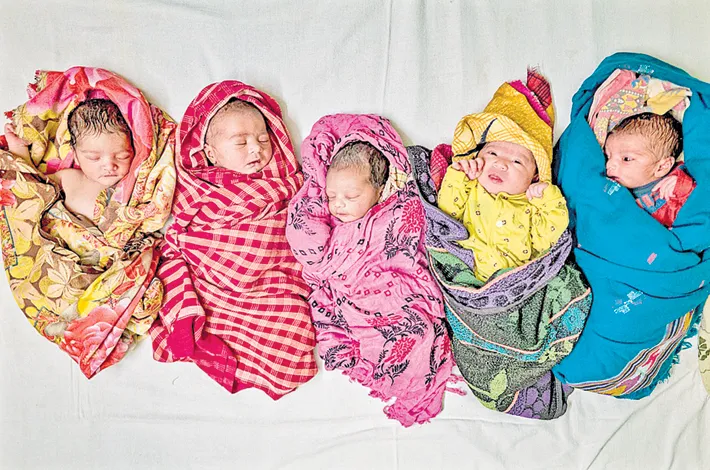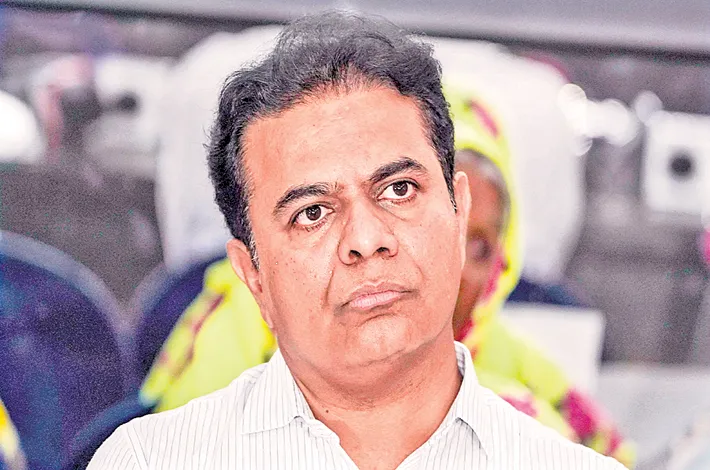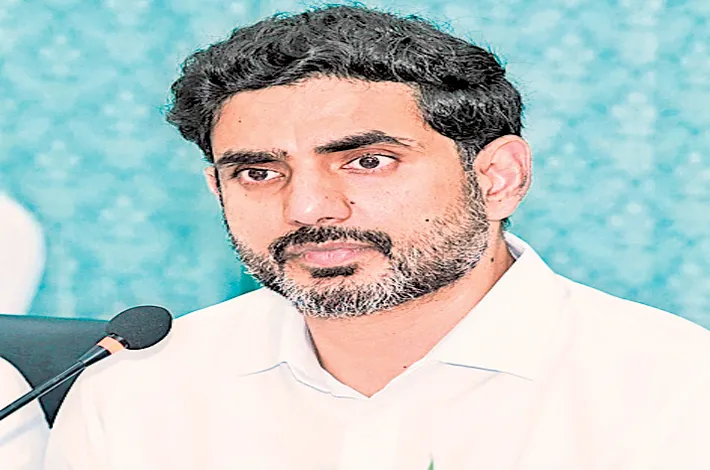Banjaras Demand a place in governance
14-06-2025 12:00:00 AM

■ With over 2.05 million Banjaras in Telangana, the community is intensifying its demand for political representation
■ Concentrated voter presence in rural districts gives Banjaras significant influence in local elections
■ In 2023, 90% of Karnataka’s Banjaras supported Congress, reacting to BJP’s internal quota changes
metro india news I hyderabad
The 2.05 million Banjaras in Telangana are no longer content with symbolic gestures such as the introduction of Lambadi textbooks in primary schools and a Banjara building that was inaugurated in 2022. The clamour for a place in the governance and a ministerial berth is growing. Congress leaders from the Banjara Community, reportedly, held a meeting recently and decided to demand Chief Minister Revanth Reddy to accommodate one elected representative from their community as the Cabinet minister.
The Banjaras’ demand for a Cabinet berth is not just about political representation but also about addressing their socio-economic backwardness and preserving their cultural identity. The inauguration of the Sevalal Banjara Building in Hyderabad in 2022 was a step toward recognizing their contributions, but the community seeks more tangible political power to drive development in their tandas. As Telangana prepares for local body elections, the Banjaras’ political clout could further shape the state’s electoral dynamics, making their demand for a Cabinet berth a critical issue for the government to address.
The Banjaras’ political relevance is further underscored by their advocacy for welfare measures, such as the proposed Tanda Development Board in Karnataka to address their socio-economic backwardness. In Telangana, similar demands for targeted development programs and resolution of issues like podu land disputes highlight their ongoing struggle for political empowerment and equitable representation.
The Banjaras’ electoral strength stems from their concentrated presence in specific constituencies, particularly in Telangana’s rural districts. Their voting patterns have often been swayed by community leaders like the Nayak or sarpanch, as seen in cases where women voters in Nalgonda followed their sarpanch’s guidance.
Revu Naik Belamgi served in the BJP government (2008-13), and Rudrappa Lamani was a minister in Karnataka’s Siddaramaiah government (2013-19). In Karnataka, the community’s support for the Congress in the 2023 Assembly elections was significant, with 90% of Banjara voters reportedly backing the party due to perceived injustices by the BJP’s internal quota policies. This demonstrates their potential to influence election outcomes when mobilized.
The All India Banjara Seva Sangha’s protests in Karnataka against internal reservation policies without proper study reflect similar demands for fair treatment and representation, a sentiment echoed in Telangana.
Vibrant community
The Banjara community, also known as Lambadi, Sugali, or Gor, is one of India’s largest nomadic tribes, with a significant presence in the Telugu states of Andhra Pradesh and Telangana. Historically known for their nomadic lifestyle, the Banjaras have transitioned over time from traders and transporters to settled communities living in tandas (hamlets), particularly in Telangana, Andhra Pradesh, and Karnataka. Their unique culture, marked by vibrant traditions, distinct language, and colorful attire, has left an indelible mark on the cultural tapestry of the region.
The Banjara culture is a vibrant mosaic of art, music, and traditions. Their language, Gor Boli or Lambadi, belongs to the Indo-Aryan group and lacks a written script, often adopting the script of the dominant local language like Telugu or Kannada. Banjara women are renowned for their intricately embroidered clothing adorned with mirrors and beads, which has become a celebrated element of Indian textile heritage.
Their traditional dances, such as the fire dance and Chari, along with festivals like Teej, where young girls pray for a good groom, are integral to their identity. Tattoos, a common practice among Banjara women, reflect personal and familial connections. The community predominantly follows Hinduism, often blending it with animistic beliefs, and reveres figures like Sant Sevalal Maharaj, a spiritual leader known for his contributions to Ayurveda and social reform.
Life and social structure
The Banjaras traditionally lived in tandas, isolated settlements that preserved their socio-cultural identity. These settlements were led by a community leader called the Nayak, who oversaw socio-political and religious matters. The community’s clan-based system, rather than a rigid caste hierarchy, fostered a strong sense of kinship and collective identity.
While many Banjaras have now settled into permanent homes, often with government assistance, their tandas remain a symbol of their historical independence and resilience. In rural areas of Telangana, such as Nalgonda and Warangal, Banjara women like Bujji (as documented in The South First) continue to work as agricultural laborers, often facing economic hardships exacerbated by issues like poor monsoons or lack of access to schemes like Mission Bhagiratha.
Impact of modernization
The Banjaras’ transition from nomadism to settled life has been shaped by historical events, notably the British Criminal Tribes Act of 1871, which stigmatized them and disrupted their traditional occupations like trading and cattle herding. In United Andhra Pradesh, this led many Banjaras to take up farming or migrate to urban areas for unskilled labour, such as construction work or domestic help.
Globalization and modernization have further influenced their marriage practices, with over 90% now adopting non-tribal customs like dowry, reflecting a shift away from their traditional identity. Despite these challenges, the Banjara community has preserved its cultural distinctiveness, with efforts like Telangana’s introduction of Lambadi textbooks in primary schools to promote their language.
In the Telugu states, the Banjaras continue to navigate the balance between preserving their heritage and adapting to modern socio-economic realities. Their cultural contributions, from embroidery to dance, remain a source of pride, even as they strive for greater inclusion in mainstream society.
Political relevance
Classified as a Scheduled Tribe (ST) in Andhra Pradesh, Telangana, and other states, the Banjaras have historically been a politically significant group due to their sizable population and concentrated presence in certain regions, such as Warangal, Adilabad, and Nalgonda. Their political relevance has grown over time, driven by their electoral influence and advocacy for representation.
In United Andhra Pradesh, the Banjaras were recognized as a Scheduled Tribe in 1956, with Telangana’s Banjaras added to the ST list in 1976 after advocacy from community leaders. This recognition granted them access to reservations in education and politics, enabling greater participation in governance. Notable Banjara leaders, such as K.T. Rathod, who served as a minister in the D. Devaraj Urs government and as KPCC president (1980-83), emerged as influential figures. In the Siddaramaiah government (2013-19), leaders like Rudrappa Lamani and Parameshwara Naik held ministerial positions, reflecting the community’s growing political clout.
The Banjaras’ journey in United Andhra Pradesh was shaped by the British Criminal Tribes Act of 1871, which disrupted their traditional occupations of trading and cattle herding. Forced into farming or forest-based livelihoods, many faced poverty and social stigmatization. Post-independence, their inclusion as a Scheduled Tribe in 1956 (and in Telangana in 1976) provided access to reservations, enabling some Banjaras to pursue education and enter mainstream professions. Today, Banjaras in Telangana and Andhra Pradesh work as teachers, doctors, administrators, and even politicians, with figures like Milind Pawar, a successful architect from the community, symbolizing their upward mobility.
As Telangana approaches local elections, Banjara leaders warn that political neglect could cost parties crucial rural votes. Their demand for a cabinet berth is both a symbolic and practical step toward inclusive governance.








